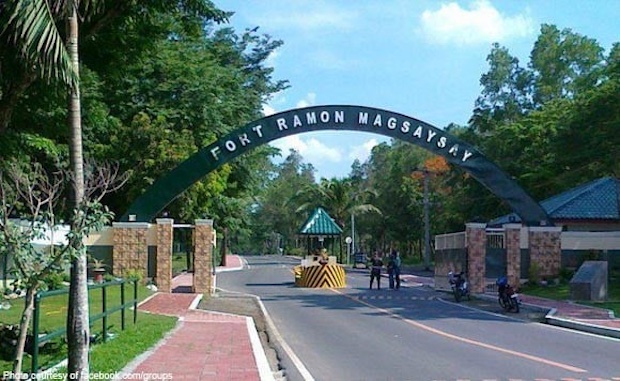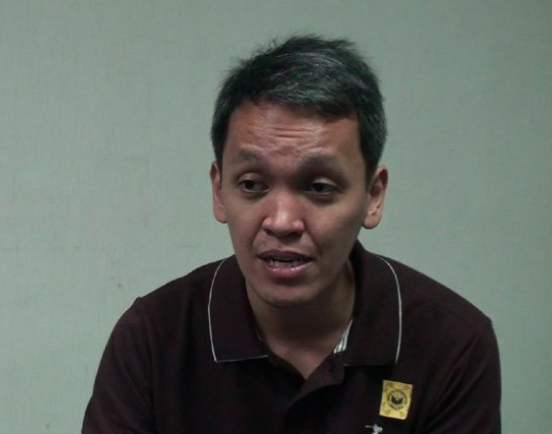Gov’t asked: Bare terms on US use of PH camps

Fort Ramon Magsaysay in Nueva Ecija is the largest military reservation in the Philippines. (Photo from the Facebook page of the Philippine Army)
MANILA, Philippines — Bagong Alyansang Makabayan (Bayan) on Saturday demanded public disclosure of the terms in which four more Philippine military bases would be used by US forces under the Enhanced Defense Cooperation Agreement (Edca) between Manila and Washington.
The four military bases, which were not identified in a joint Philippines-US announcement on Thursday, are in addition to five current “agreed locations” — Basa Air Base in Pampanga, Fort Magsaysay in Nueva Ecija, Lumbia Air Base in Cagayan de Oro, Antonio Bautista Air Base in Palawan and Mactan-Benito Ebuen Air Base in Cebu.
Renato Reyes, secretary general of the alliance of several activist organizations, said American facilities in all these bases would be under the “operational control” of the US military, doubting claims by the Philippine side of “joint control” by the Filipino and American forces.
‘Exclusive use’
He said Filipino troops might end up as mere security guards for the Americans.
Reyes said Edca would allow the United States to use these facilities rent-free and tax-exempt, and that there was “no joint control” specified in the agreement itself.
Article continues after this advertisement“Why did the Philippine government allow these perks?” he said.
Article continues after this advertisementEdca, which was signed in April 2014 before then US President Barack Obama’s visit to Manila, would help the United States boost its presence again in the region where China now dominates, especially in the South China Sea. Beijing also continues its belligerent plans to retake Taiwan, which it considers to be a province of China and the closest northern neighbor of the Philippines.

Renato Reyes Jr. INQUIRER.net FILE PHOTO
Edca supplements the Visiting Forces Agreement, which was signed in 1998, and the 1951 Mutual Defense Treaty.
Reyes said that US equipment prepositioned at these Edca camps would only be for the “exclusive use” of US forces and that these privileges would also be given to their private military contractors.He cited two Edca provisions which stated that the American facilities inside Philippine bases would be under the “operational control” of the United States.
Under Article III of Edca, the Philippines granted the United States—through its bilateral security mechanisms, including the Mutual Defense Board and Security Engagement Board—operational control over the agreed locations.
Aside from their exclusive use by the Americans, the “full title to all such equipment, supplies and materiel remains with the United States,” according to Article IV of the agreement.
Reyes said the United States would have “unimpeded access” to the agreed locations and the Philippines won’t have a say on “what goes in and out” of these locations.
“There is no ‘joint control’ in Edca,” Reyes said. “Such is a myth since the US facilities will remain under the exclusive control of the US forces, and Filipinos will be reduced to providing perimeter security for a foreign army.”Galvez cites benefits
Acting Defense Secretary Carlito Galvez Jr. said in a statement on Saturday that Washington did not intend to build permanent bases in the Philippines, reiterating a statement on Thursday by US Defense Secretary Lloyd Austin III who was on a visit to the Philippines.
“Thus, these Edca sites should not be a cause for concern for anyone since it could also spur economic investments, joint protection and preservation of our maritime and natural resources,” he said.
The US government has poured $82 million (around P4.4 billion) into the five current Edca sites for infrastructure improvements.Edca was “primarily envisioned to develop our own bases and facilities in line with our overall efforts to enhance our defense posture, especially our preparedness for responding to disasters and emergencies,” Galvez said.
According to Galvez, Edca would facilitate construction and infrastructure upgrades that would directly enhance the capabilities of the Armed Forces of the Philippines.
“Prepositioned equipment that will be stored in the agreed locations will strengthen our capabilities to immediately deliver humanitarian assistance to disaster-affected areas as well as promote more rapid reaction times during disasters, emergencies, or contingencies,” he said.
FPCon
In a statement on Saturday, AFP spokesperson Col. Medel Aguilar said that all nine agreed locations under Edca “are facilities that the US and Philippine forces will jointly operate to facilitate and expedite the implementation of programs that will enhance our security cooperation, joint training, and HADR (humanitarian assistance and disaster response) operation.”
Aguilar did not directly comment when asked on how the agreed locations, or the camps covered by Edca, would be affected by the US Department of Defense policy of Force Protection Condition (FPCon), a five-level system that standardized the identification and responses to terrorist threats against US personnel and facilities.
The US Indo-Pacific Command has placed the Philippines between the third and fourth-highest level of FPCon Bravo and Charlie, “with additional measures.”
Under FPCon Charlie, which applies when an incident occurs or intelligence is received indicating that some form of terrorist action against personnel or facilities is likely, US facilities would increase their security measures and require thorough ID checks at the gates.
Caught in rivalry
In an interview with UNTV on Friday, Rommel Banlaoi, chair of the Philippine Institute for Peace, Violence and Terrorism Research, said he was “very worried” about the “far-reaching consequences” of the chosen Edca camps.
“The security risk we face is very high because China will not allow America to have greater military advantage in Asia-Pacific,” he said. “With the US around, we will always be caught in the US-China power rivalry. So, we will really be squeezed between these two countries.”
If tension over Taiwan escalates into an armed conflict between the United States and China, the Philippines “will need to breach our neutrality policy,” according to Chester Cabalza, founding president of the think tank International Development and Security Cooperation.
“But reality bites. The mere fact that we have engaged with the US in approving the Edca sites, that means we are one step with our alliance with the US,” he said in an interview with One News PH on Thursday.